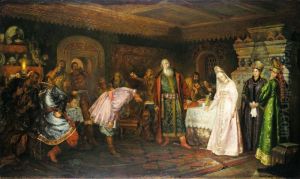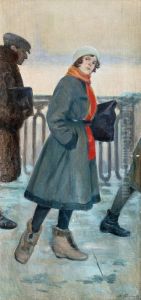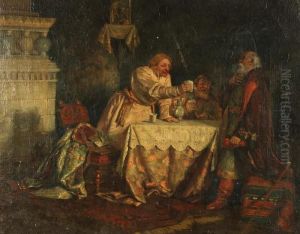Fedor Fedorovich Bucholz Paintings
Fedor Fedorovich Bucholz, also spelled as Fyodor Fyodorovich Buchholz, was a Russian-Ukrainian sculptor known for his significant contribution to the arts during the late 19th and early 20th centuries. Born on October 22, 1857, in the city of Kharkov (now Kharkiv, Ukraine), Bucholz was part of the Russian Empire at the time of his birth. He was exposed to art at a young age and demonstrated a strong inclination towards sculpture.
Bucholz pursued his artistic education at the Imperial Academy of Arts in Saint Petersburg, where he honed his skills and embraced the neoclassical style that was prevalent during that era. His talent was recognized with various awards, including the prestigious gold medal upon his graduation, which allowed him to travel abroad for further study. This period of travel and study in Europe was crucial for his artistic development, as he was exposed to a range of artistic styles and techniques that influenced his later work.
Upon returning to the Russian Empire, Bucholz engaged in a prolific career, creating many public monuments and sculptures that remain significant in Russian and Ukrainian cultural heritage. His works often captured national historical figures and events, contributing to the visual narrative of the region's history. Bucholz's sculptures were characterized by their detailed realism and dynamic composition, which resonated with the public and the artistic community alike.
During the tumultuous years of the Russian Revolution and the subsequent changes in the political landscape, Bucholz's work experienced varying degrees of reception. Nonetheless, he continued to work and teach, influencing a new generation of sculptors until his death on February 23, 1942, in Kharkiv. Fedor Fedorovich Bucholz is remembered for his contribution to the arts, particularly in his homeland, where his legacy persists in the form of his enduring sculptures and as a figure in the history of Russian and Ukrainian art.


